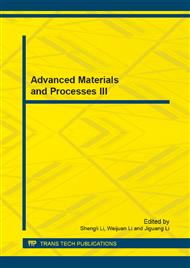p.1000
p.1004
p.1008
p.1015
p.1020
p.1026
p.1031
p.1035
p.1040
Study of the Surface Integrity of Powder-Metallurgy High-Speed Steel (S390) Multi-Cut by Wire Electrical Discharge Machining
Abstract:
The surface integrity of powder metallurgical high speed steel (S390) cut by wire electrical discharge machining (WEDM) has a great influence on the its fatigue life. In this paper, a study focused on surface integrity including white layer, surface finish, retained austenite, carbide and residual stress changed with multi-cutting has been described. Scanning electron microscopy (SEM), X-ray diffraction (XRD) and energy dispersive spectrograph (EDS) analysis were performed in the examination of the evolution of surface integrity. The experimental results reveal that the surface roughness, micro-cracks, white layer thickness and surface residual stress decrease with the increase of cutting pass, but the amount of retained austenite in the resolidified layer of the surface after the second cutting pass is the highest, compared with the other cutting passes. The content of carbides increases with the cutting pass and few carbides appear in the top section of the white layer of the first two cutting passes.
Info:
Periodical:
Pages:
1020-1025
Citation:
Online since:
September 2013
Authors:
Price:
Сopyright:
© 2013 Trans Tech Publications Ltd. All Rights Reserved
Share:
Citation:


